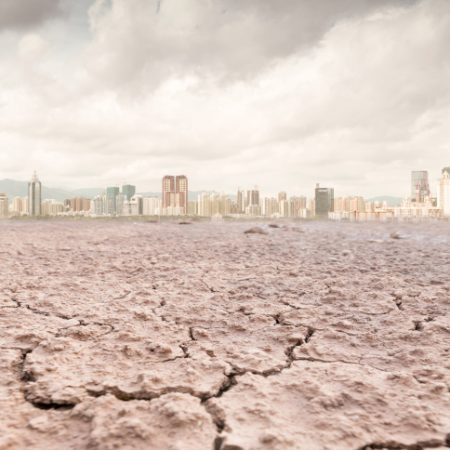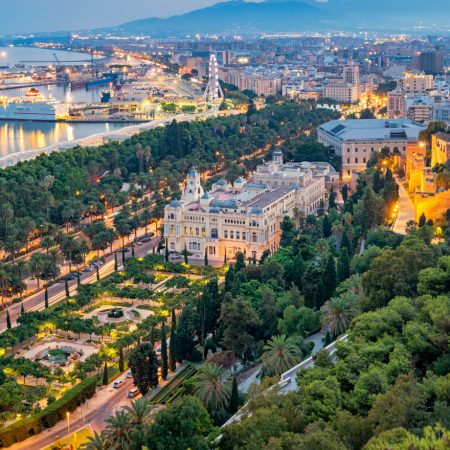Tourism and hospitality are always on a journey, shaped by evolving patterns of demand. In recent years, powerful global influences have changed the way people think about vacations – with significant implications for the industry.
Most obviously, the increasing prevalence of extreme weather events caused by climate change – from fire and flood to crippling heatwaves – is informing tourists’ choices.
The bushfires that devastated parts of Australia in 2020 led to losses estimated at $4.5 billion, according to The Australian Tourism Export Council, as international travellers cancelled their trips. The recovery was hindered by long, strict lockdown periods in the region, and the country’s annual visitor numbers were still 43% below pre-pandemic levels in May 2023, according to Tourism Australia. However, tourist numbers have rebounded by 319% on an annual basis, signifying a strong path towards full recovery.
Carbon footprint awareness
Climate trends are feeding into consumers’ concerns about carbon emissions from travel, particularly flights. Alongside cars, flights generate the most CO2 per passenger mile.
Tourism as a whole is responsible for around 8% of the world’s greenhouse gas emissions, with transport at the forefront. The problem was increasing rapidly before the Covid pandemic. Between 2005 and 2016, emissions from tourist transport increased by more than 60%, with global lockdown providing only temporary respite.
At the same time, travellers are more aware of their journeys’ carbon footprint. The no-fly movement has gained traction, especially in eco-conscious countries, such as Germany and Sweden.
However, there is little sign so far of a structural decline in the popularity of air travel. Despite the pandemic, aviation continues to outpace other modes of transport. Even within the EU, where the rail network is extensive and efficient, international journeys account for less than 5% of all EU rail travel.
The introduction of new rail connections can have a positive impact on tourist flows and seasonality, as they can improve the connectivity of certain locations. In China, the high-speed rail (HSR) has increased the number of international and domestic tourists. Domestic visitors and overnight stays have also risen in Italian and coastal Spanish cities connected to the HSR, according to a research paper on the effect of HSR on tourism seasonality (David Boto-García, Levi Pérez, 2023).
European Union air and rail passenger growth
Source: Savills Research using Eurostat
Of course, one sure-fire way for tourists to cut their emissions is to holiday nearer home. Staycations enjoyed a huge boost during the pandemic and soaring inflation has since provided a further fillip, as some people opt for domestic holidays to keep costs down.
Interest of search term “staycation” (Worldwide)
Source: Google Trends
UNWTO data demonstrate that the recovery of tourism post-pandemic has been driven by domestic demand. Global hotel bookings are up 115% vs 2019 (January to May 2023) with domestic passenger demand 1% above pre-pandemic levels and international demand 17% below.
Winning destinations
Rail or ferry links may be part of the package for winning staycation destinations. However, other factors – such as recreational and cultural amenities and natural attractions – also influence tourists.
According to Eurostat data, nights spent in tourist accommodation by domestic travellers in Europe in 2022 were 3% above 2019 compared to 13% below for foreign travellers.
EU domestic vs foreign tourist overnight stays
Source: Savills Research using Eurostat
In some countries, domestic overnight stays were much higher, such as in Belgium and the Netherlands where they were up 11% and 15% respectively. This trend has benefited coastal and historic destinations such as Antwerp, Bruges and The Hague, as well as smaller regional destinations.
In the UK, Cornwall, the Cotswolds and the Lake District are among the most popular destinations for domestic travellers. All have seen rising demand for second homes and Airbnb, as well as hotels, cafes and leisure activities.
In the US, the staycation trend picked up in 2020, due to travel restrictions related to the pandemic. Travellers discovered the benefits of travelling close to home with favoured destinations including Orlando and Key West in Florida and Cape Cod in Massachusetts.
However, over the past 12 months international departures have also picked up. According to the International Trade Administration, the average monthly number of US passengers travelling abroad since March last year exceeds the pre-pandemic five year average by 14%.
While international travel is poised to recover fully to pre-pandemic levels, domestic tourism is also expected to have a significant impact on the industry. This is likely to drive increased demand for emerging domestic holiday destinations, which offer affordable and easily accessible vacation options.
Seasonal and location opportunities
A web of interlinked pressures are moulding the way people think about their holidays. Government policy also influences climate change and transport issues, and government intervention is likely to increase as global warming becomes more extreme.
These shifting megatrends bring opportunities as well as challenges, and the implications for holiday destinations are complex.
The wildfire risk and summer heatwaves in tourist hubs such as the Mediterranean could impact the seasonality of visitor flows. This may extend the tourist season beyond the traditional summer months, making spring and autumn more popular times for travellers to visit.
The gradual flattening of the seasonality curve may benefit destinations that suffer from high fluctuations in visitor numbers by alleviating pressure on infrastructure and the workforce – ultimately creating more sustainable, stable and resilient tourist destinations. In summer, it may benefit cooler destinations, such as Northern Europe and Scotland, boosting demand for tourist accommodation there.
Ecotourism is likely to thrive, too, in the shoulder seasons. The weather is perhaps more changeable than in summer, but the natural world is at least as rewarding.
If the no-fly movement expands, tourist centres with good rail connections may benefit. European coastal destinations, from the Algarve in Portugal to Italy’s Amalfi coast, could see an uptick in visitor numbers, especially in spring and autumn, as could the summertime Swiss Alps and the UK’s Cotswolds and Northumbrian coast.
“These evolving consumer trends can extend the season of these more resort focused markets, boosting total annual revenues and in turn helping to support stock expansion and investment into these markets,” says Tim Stoyle, Savills Hotels Director.
Opting for sustainability
Sustainable tourist destinations that prioritise eco-friendly practices, minimise carbon footprint, conserve the environment and support local businesses are gaining in popularity. One 2022 study suggests the ecotourism market is set to see annual growth averaging around 15% between 2021 and 2027.
Sustainability ratings, such as Booking.com’s green leaf rating, are used to rate accommodation based on their sustainability practices.
“These ratings are important for operators to improve their green credentials because travellers are increasingly looking for sustainable travel options,” says Adam Bray, Director of Customer & Place Strategy at Savills.
A 2022 Sustainable Travel Report by Booking.com shows that 81% of global travellers think sustainable travel is important, with 70% saying they would be more likely to book sustainable accommodation.
The future of the hospitality industry is a work in progress. The shift in tourist preferences presents a unique chance for innovative operators, local businesses and governments to collaborate and create offerings that cater to the growing demand for responsible tourism.
“Ultimately, this is an area where consumers are personally accountable for the choices they make,” says Bray.
As more people seek out environmentally friendly offerings, a more sustainable style of tourism is set to evolve.



